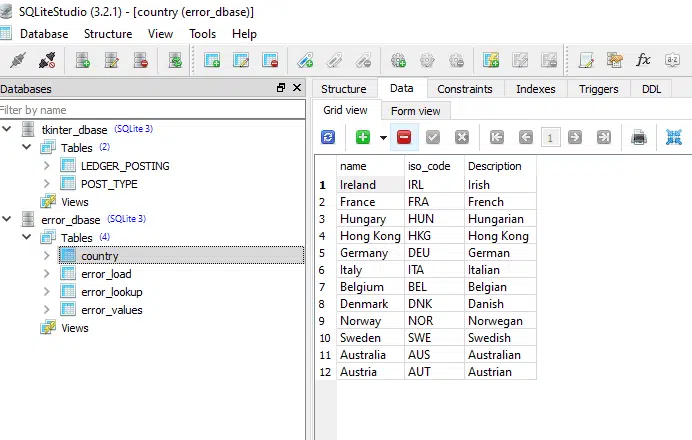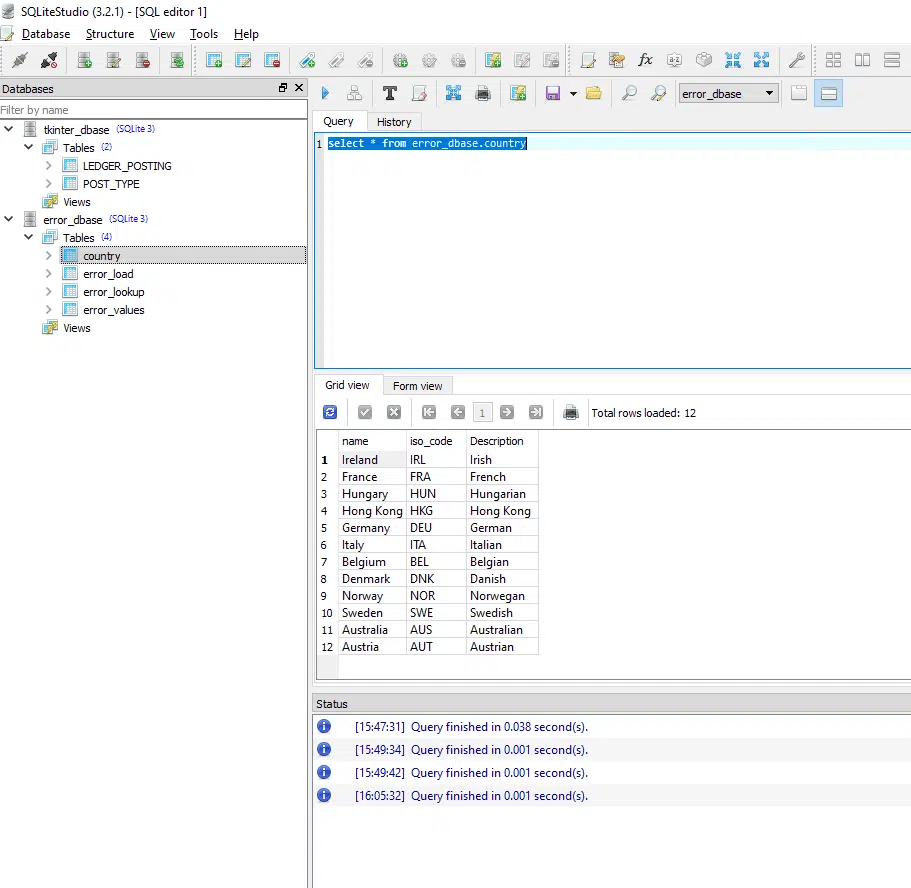Estimated reading time: 2 minutes
As part of working as a data analyst, in order to retrieve your data you will most likely need to connect into a database, and look at the database records and then start analysing, but how?
At the start of any data analytics project you will need to understand the structure of your data and what are the issues within it.
First of all you will need to connect to your database, and then open an SQL editor.
In this example we are going to use SQLite, it is very popular and can be downloaded from here .
Once you have this downloaded, you will need to create your database, tables and records.
Today we are going to retrieve records from a table that I have already created, as per the screenshot below

So that is the able above, but how would I use SQL to retrieve all its records?
In esseence it is very straight forward, all you need to do is run the following code:
select * from error_dbase.country
and it will provide you with the following output

and there you go, now you have retrieved all the records from the database table!
To see a video tutorial on this, watch the full video below:
